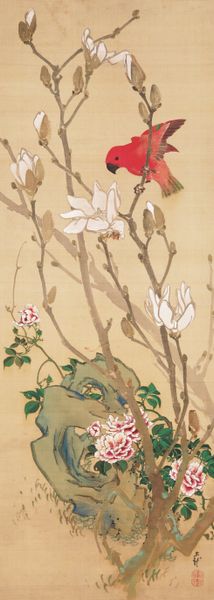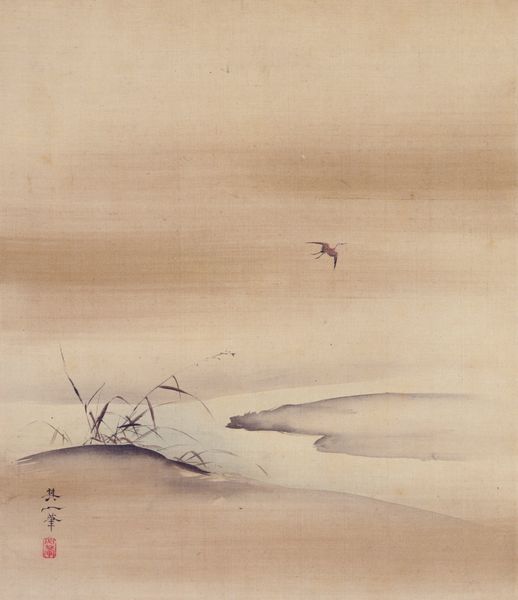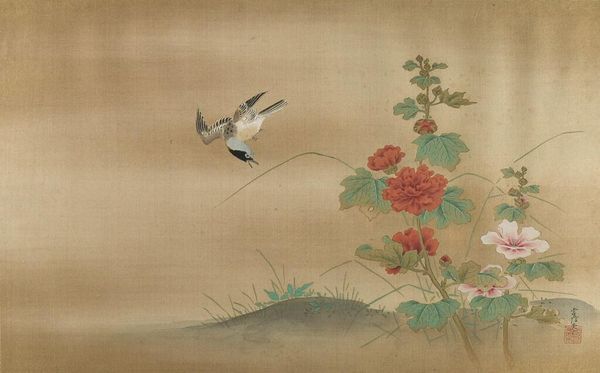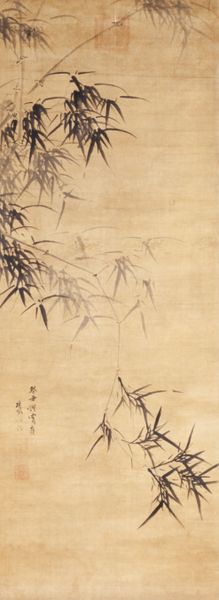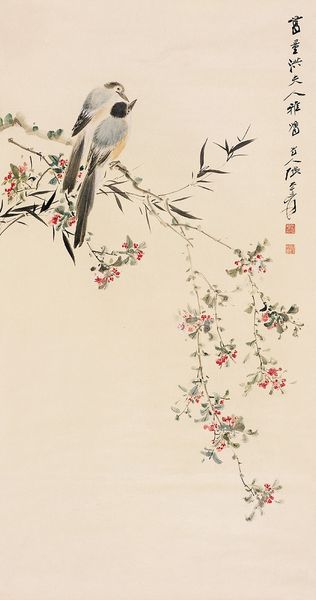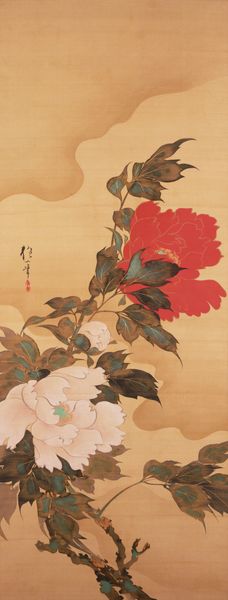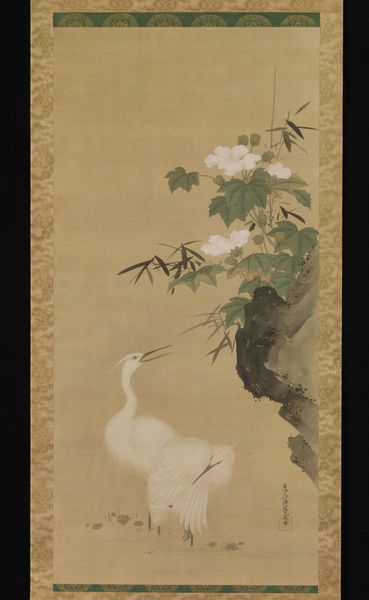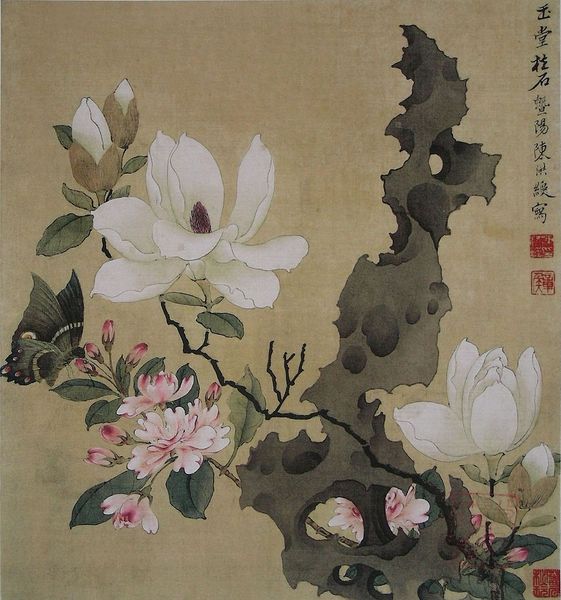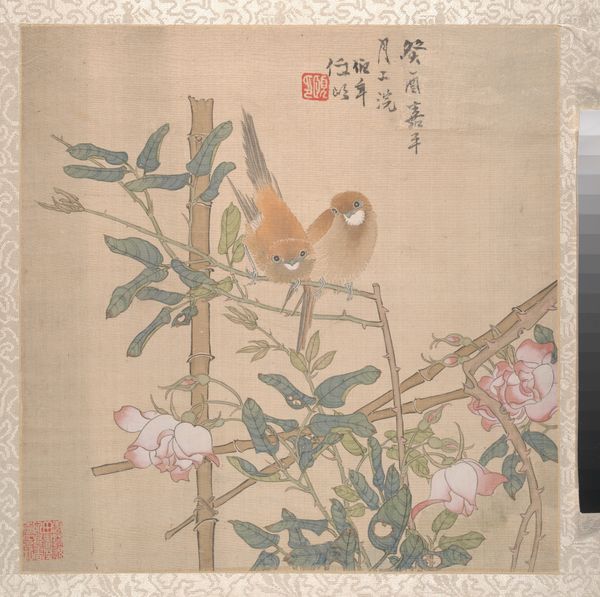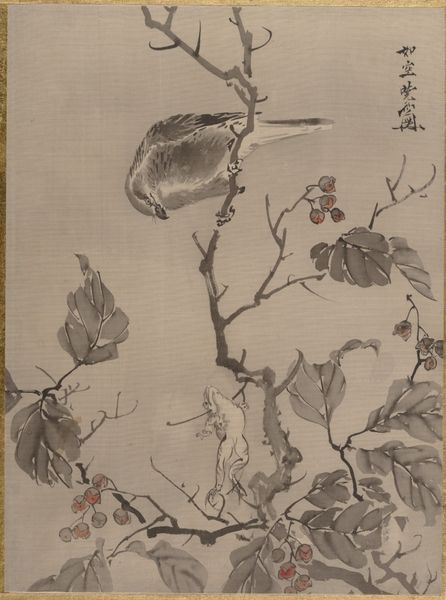
color-on-silk, print, paper, watercolor, hanging-scroll, ink
#
color-on-silk
# print
#
asian-art
#
landscape
#
ukiyo-e
#
japan
#
paper
#
watercolor
#
hanging-scroll
#
ink
#
watercolor
#
realism
Dimensions: 47 7/8 × 19 5/8 in. (121.6 × 49.85 cm) (image)72 1/4 × 25 1/16 in. (183.52 × 63.66 cm) (without roller)
Copyright: Public Domain
Curator: At first glance, I feel such stillness emanating from this image. It’s a cold, quiet piece. Editor: Precisely. What we have here is “Egrets in Snow,” a mid-19th century color-on-silk hanging scroll by Tsubaki Chinzan, presently held at the Minneapolis Institute of Art. Curator: Hanging scroll, huh? It feels more like a window into a hushed dream. The egrets are huddled together for warmth, I presume. I wonder what they’re thinking…or rather, if they're thinking at all. Editor: The scroll format itself is fascinating. Historically, these works were displayed briefly, connecting with specific seasons or events, unlike the permanent display we’re accustomed to today. So the fleeting nature of winter mirrors the fleeting display. Curator: A visual haiku then, of impermanence. There’s such delicate precision in how Chinzan captured the snowy branches and the birds' plumage using ink and watercolor. I imagine the challenge of portraying whiteness using essentially monochrome techniques. Editor: Yes! Consider the cultural context of appreciating “mono no aware"— the pathos of things, an awareness of transience which echoes throughout much Japanese art and literature. The realism captures this ephemeral quality while emphasizing that all things are fleeting. It’s deeply embedded in the reception and understanding of artworks like this. Curator: It's more than just the technical skill; it's also the ability to convey a certain mood, a contemplative space. Art can transport you so completely...you almost feel the biting chill. Editor: Indeed. Think of how this reflects socio-political influences, shaping the patronage, and artistic movements. The value placed on observing and interpreting nature shaped both the production and our viewing experiences of art from that time. Curator: Seeing these birds nestle really shifts something in my soul; that stark winter light now seems full of a tender benevolence. Editor: So, next time you see snow, remember Tsubaki Chinzan, perhaps. And maybe, notice the silent stories unfolding right outside your window.
Comments
minneapolisinstituteofart almost 2 years ago
⋮
In Japanese art, herons/egrets are often depicted in pairs, amid willow trees and reeds. In this lyrical scene, the birds’ bright plumage, crisply delineated in opaque white pigment, stands out against the gloomy ink wash of the background. Withering foliage appears to bow beneath the weight of settling snow, cleverly suggested by unpainted space.
Join the conversation
Join millions of artists and users on Artera today and experience the ultimate creative platform.
